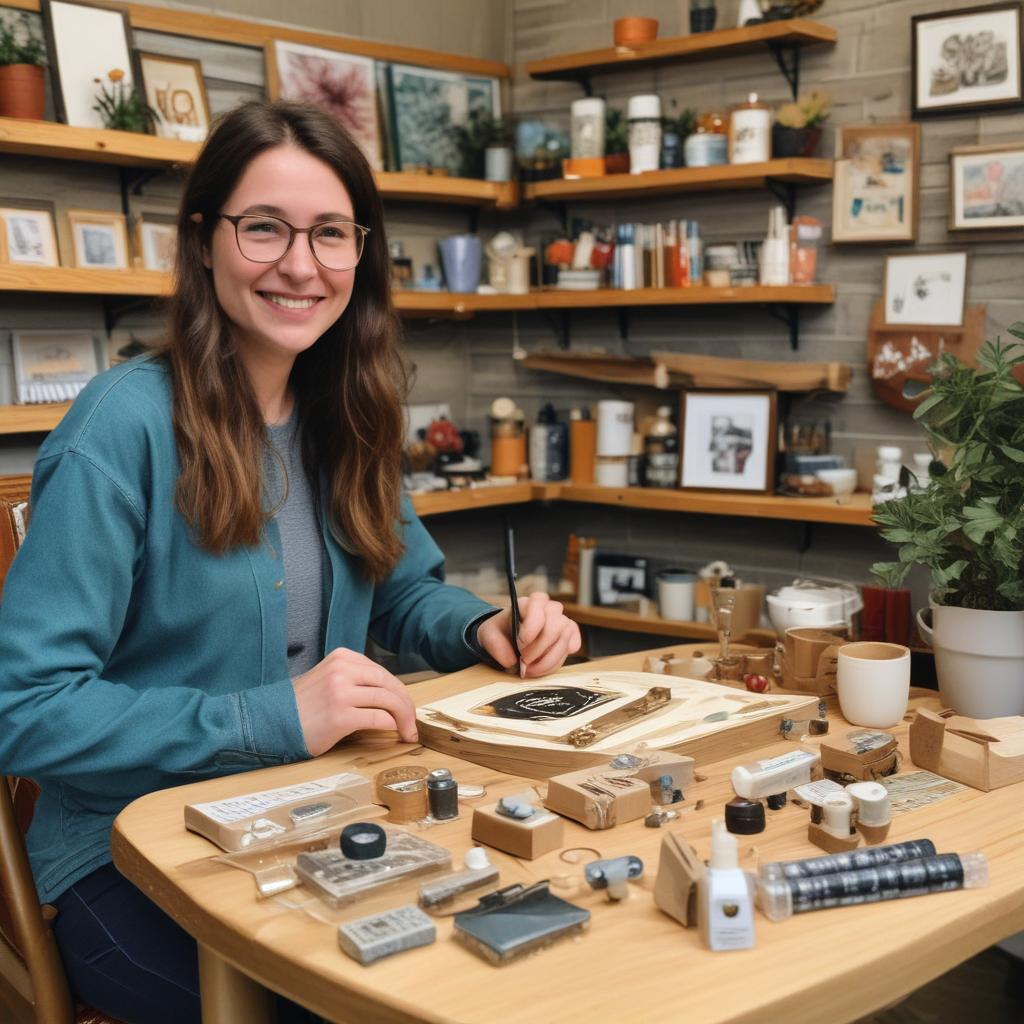The room was silent except for the soft rustling of papers and the occasional click of a tool. Around the table sat five adults, each deeply focused on the intricate parts spread before them. This was not a high-stakes corporate meeting or a stressful exam room; this was a craft kit workshop, a place where like-minded individuals gathered to indulge in the simple joy of making something with their own hands. Sarah, a 34-year-old graphic designer, found herself lost in the process of assembling a miniature greenhouse. Each tiny plant and piece of furniture she placed brought a sense of accomplishment that she hadn’t felt in her daily job for a long time. This workshop, a weekly escape, not only nurtured her creative soul but also connected her with a community of fellow crafters who supported and inspired each other.

Crafting, once thought to be merely a hobby for children or a necessity in past generations, has bloomed into a vibrant culture of DIY kits for adults. These kits, encompassing everything from woodworking and electronics to painting and miniature model making, are more than just tools and materials. They represent a bridge to connecting individuals, fostering a sense of community, and enhancing mental well-being through the therapeutic act of creation.
The rise of DIY craft kits for adults can be traced back to several societal shifts. The digital age, while bringing many benefits, has also led to a form of fatigue with virtual interactions and digital screens. People are increasingly looking for ways to disconnect from the digital world and reconnect with their hands and hearts. Moreover, the modern work environment often leaves little room for personal expression. Craft kits offer a way to break from the routine, challenge one’s skills, and achieve a tangible accomplishment.
Communities are at the heart of the DIY craft kit movement. Across the globe, from small local meet-ups in neighborhood cafes to large online forums and social media platforms, crafters are coming together to share their passions. These communities provide a wealth of resources for both beginners and experienced crafters. Newcomers can find guidance and encouragement, while veterans have a platform to showcase their expertise and perhaps even market their own custom-designed kits.
One of the compelling aspects of these communities is how they transcend typical barriers such as age, profession, and cultural background. In craft circles, it’s not uncommon to see retirees sharing tips with young professionals, or people from different continents exchanging patterns and design ideas. This melting pot of experiences enriches the crafting process, making it a truly inclusive activity.
DIY craft kits also play a significant role in mental health. Engaging in handcraft reduces stress and increases serotonin levels, providing a happy distraction from the stresses of everyday life. The repetitive motions common in crafting (like knitting or assembling small pieces) can be meditative, offering a mental break that fosters mindfulness. Furthermore, the act of completing a project brings a sense of satisfaction and pride that can boost one’s self-esteem and overall mood.
The economic impact of the crafting industry is another angle worth noting. As the demand for adult craft kits has increased, so too has the number of small businesses and independent artisans offering bespoke kits. These entrepreneurs are leveraging the power of the internet to reach a global market, providing them with a sustainable income while also spreading the joy of crafting. Craft kit subscriptions have emerged as a popular trend, where participants receive a new project to work on each month, keeping the excitement and engagement levels high.
For example, consider the story of Linda, who started a small business creating eco-friendly DIY jewelry kits. After losing her job during an economic downturn, she used her background in arts and crafts to assemble kits made from upcycled materials. Through local craft fairs and social media marketing, her products gained popularity. Not only did her kits provide people with the joy of crafting, but they also promoted sustainability and supported a local circular economy.
- Connectivity: Craft communities provide a forum for sharing ideas, getting feedback, and supporting others. Online platforms and local workshops foster strong relationships among participants.
- Economic Opportunity: Crafters and small businesses can succeed financially by marketing unique kits. These ventures bring localized economic boosts and support the entrepreneurial spirit.
- Educational Value: DIY kits often come with educational components where crafters can learn new skills or explore new hobbies. This continuous learning can be both fulfilling and invigorating.
- Therapeutic Benefits: Crafting has proven benefits for mental health, including reduced anxiety and improved mood. The tactile nature of crafting provides a unique form of stress relief.
- Sustainability: Many craft kits use recyclable or eco-friendly materials to support environmental consciousness and promote sustainable practices.
The increasing popularity of DIY craft kits for adults demonstrates a collective yearning for creativeness, community, and a balance between the digital and tactile worlds. As this trend continues to grow, it promises not only to enrich individual lives but also to strengthen communities, support economic growth, and enhance educational and therapeutic offerings. Crafting isn’t just about making things; it’s about crafting connections, and these connections are as intricate and vital as the pieces in any DIY kit.


.jpg)





.jpg)



.png)
0 Comments